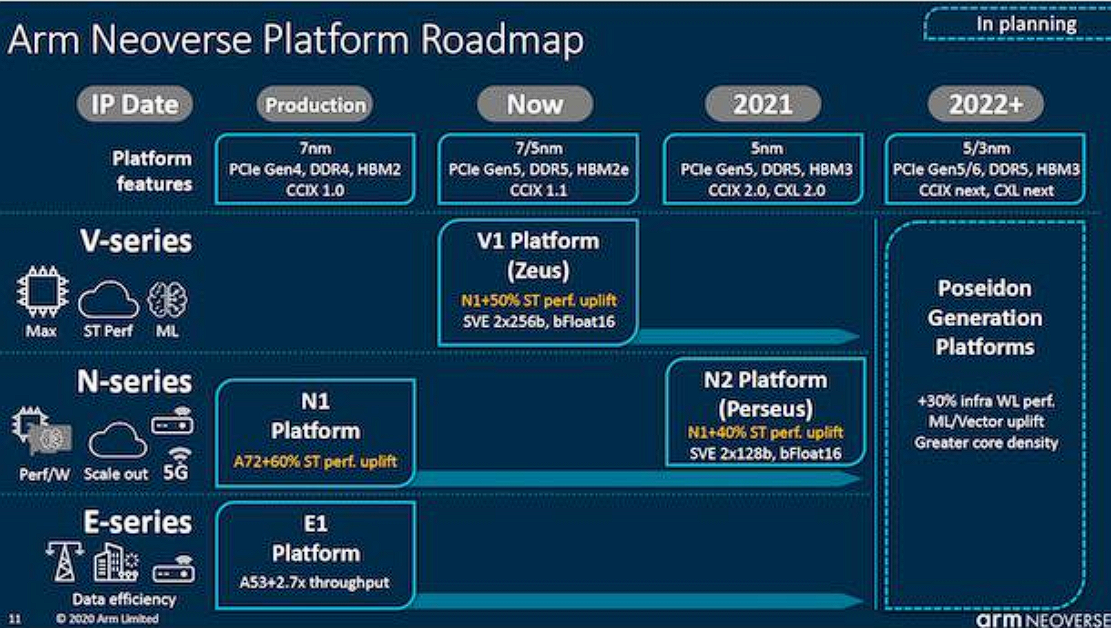Associate
- Joined
- 22 Jun 2018
- Posts
- 1,786
- Location
- Doon the watah ... Scotland
Is ARM going through a steep development/improvement curve at the moment that may yet plateau out like x86 appears to have done ?
Please remember that any mention of competitors, hinting at competitors or offering to provide details of competitors will result in an account suspension. The full rules can be found under the 'Terms and Rules' link in the bottom right corner of your screen. Just don't mention competitors in any way, shape or form and you'll be OK.
Is ARM going through a steep development/improvement curve at the moment that may yet plateau out like x86 appears to have done ?
Is ARM going through a steep development/improvement curve at the moment that may yet plateau out like x86 appears to have done ?
I listened to a interview of Jim Keller by Lex Friedman, and it was really interesting the discussion around x86 and ARM. Zen and K12 (ARM) were developed at the same time, where Zen ended up being heavily influenced by strategies ARM employed. To paraphrase Jim "some things ARM did were very clever, and some things were not. We picked the best bits and applied them to Zen".
It's also interesting K12 was shelved indefinitely, suggesting that x86 still has legs in it.
Anyway, there are probably a handful of people on the planet that can actually weigh in on this, so only time and benchmarks will tell. My 2c is that x86 is here to stay for some time yet.
Oh definitely. The shot in the ARM that AMD has given X86 is massive. Over just the last 18 months AMD has more than doubled performance and that looks set to double again over the next.
I can see EPYC doubling socket and core count plus a 30% IPC gain over the next two years.
I think that's very ambitious for AMD. But 15% IPC improvement every 18 months (which seems to be the plan) will make sure ARM (outside of Apple) is not going to surpass x86 in the next 3 years at the earliest.
AMD could double core count and sockets now.
‘We know the alternative architecture isn’t standing still, but we’re very confident that Neoverse N2 will continue to represent the ultimate in per socket performance and Neoverse V1 will offer the ultimate per thread performance into the future,’ Arm executive Chris Bergey says of the newly disclosed server CPU designs.
Arm has revealed two next-generation Neoverse server CPU designs, saying that the new V1 core for maximum performance and N2 core for scale-out performance will deliver significantly higher performance than processors made by Intel or AMD.
Arm’s new Neoverse disclosures were made as the company claimed significant progress in the data center market, with four of the world’s top seven hyperscalers adopting Arm-based processors for deployments and with Arm-based Fujitsu processors powering Fugaku, the newly minted fastest supercomputer in the world. Arm’s V1 design has already been provided to silicon partners, and the N2 design is already sampling with some partners, though full delivery won’t happen until next year.
“The emergence of Arm in the data center is being powered by many factors: customization, efficiency, ecosystem diversity, but all of that builds on top of performance,” Chris Bergey, senior vice president and general manager of Arm’s infrastructure business, said in a pre-briefing with journalists and analysts. “If Neoverse wasn’t delivering a significant measurable value proposition you would not see the market adoption and momentum that we are achieving.”
Bergey said the new V1 CPU core — previously code-named Zeus and part of the Neoverse’s new V-series for high single-threaded and machine learning performance — provides a more than 50-percent performance improvement over Arm’s N1 core. The N1 core is currently used to power Amazon Web Services’ Graviton2 processors and Ampere’s upcoming 128-core Altra Max processors, both of which have claimed significant gains over Intel’s and AMD’s server processors.
With performance data from internal estimates, Bergey said an Arm N1 processor with 128 cores already provides higher performance per socket and higher performance per thread over AMD’s 64-core EPYC 7742 processor and Intel’s Xeon 8268 processor. But with a 96-core V1 processor and a 128-core N2 processor, those gains over the AMD and Intel processors increase significantly, he added.
“We know the alternative architecture isn’t standing still, but we’re very confident that Neoverse N2 will continue to represent the ultimate in per socket performance and Neoverse V1 will offer the ultimate per thread performance into the future,” he said.
Along with Arm’s advances in CPU designs, Bergey said the company has also built a solid foundation of software support in the data center, citing support from Red Hat, VMware, SUSE, Oracle Linux, KVM, Kubernetes, Docker, MySQL, MongoDB, Apache and other plays in the ecosystem.

With performance data from internal estimates, Bergey said an Arm N1 processor with 128 cores already provides higher performance per socket and higher performance per thread over AMD’s 64-core EPYC 7742 processor and Intel’s Xeon 8268 processor. But with a 96-core V1 processor and a 128-core N2 processor, those gains over the AMD and Intel processors increase significantly, he added.
Sadly mine got left in my parent's loft when I moved out and the PCBs had turned into green mush by the time I got back to them.
Is that your collection? I had at least two of those there I'm envious.


